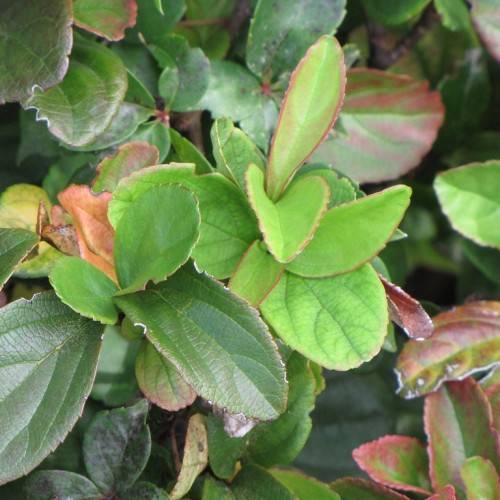
sandankwa viburnum
Viburnum suspensum
Cycle:
Perennial
Watering:
Average
Hardiness Zone:
8 - 10
Flowers:
Flowers
Sun:
Full sun,part shade
Fruits:
Fruits Ready In Fall
Leaf:
Yes
Growth Rate:
Low
Maintenance:
Low
Drought Tolerant:
Yes
Salt Tolerant:
Yes
Invasive:
Yes
Care Level:
Medium
watering
The sandankwa viburnum (Viburnum suspensum) is a drought-tolerant plant that will usually do best with weekly watering during its active growth season. During dry seasons or periods of extended hot weather, more frequent watering may be necessary. It is best to water at the soil level (rather than leaves or stems) and allow the soil to dry slightly in between watering. Over-watering can lead to root rot and root issues, so be sure the soil is not soggy. During the plant's dormancy, water just enough to keep the root ball from drying out completely.
sunlight
Sandankwa viburnum (Viburnum suspensum) prefers bright light for optimal growth. Morning and afternoon sun is best, but it can tolerate shade to partial sun. It will bloom more profusely in more sun, however, it is sensitive to scorching heat and will need protection from the direct midday sun in climates that receive strong sun. Your sandankwa viburnum should receive at least 4-5 hours of direct sunlight a day.
pruning
Sandankwa viburnum (Viburnum suspensum) should be given a light prune in the spring, right after it flowers. Removing dead or damaged branches and crossing branches can help improve the health of the plant and open up its canopy. If there is more significant pruning required, it is best done in late winter while the plant is still dormant. Pruning should be done judiciously, as it can harm the plant if done too heavily, and interfere with flowering in the spring. As a general rule, it is best to only remove up to 1-third of the plant's branches per pruning session.
